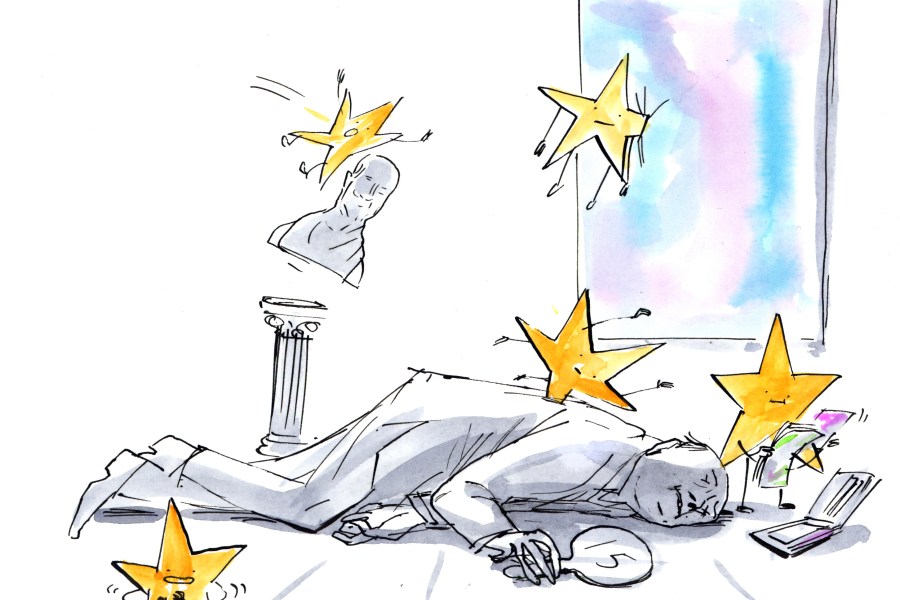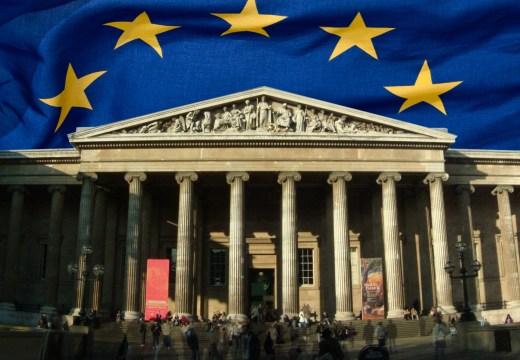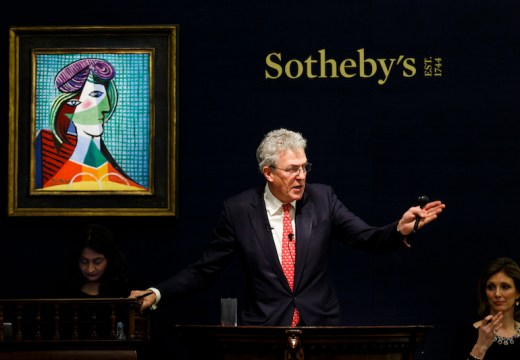On 23 June, the British public will vote to leave or remain in the European Union. Would a ‘leave’ vote spell disaster for the UK’s thriving art trade, or open up new opportunities to it?
Yes
Pierre Valentin
If the outcome of the referendum in June is that the UK leaves the European Union, how will this affect the British art market? I am not as concerned about the immediate aftermath of Brexit as I am about the longer-term consequences of a divorce from the EU. I expect that Brexit would trigger a significant drop in the value of sterling against other currencies. This, in the short term, would make buying art and antiques in the UK more attractive.
Meanwhile, the cost of divorcing the EU would severely hit the UK’s public finances. Inevitably, taxes would rise. The wealthy would be hit particularly hard. Since 2008, the French government has driven the wealthy from France by applying punitive tax rates and the higher end of the French art market has suffered. The same would happen in the UK. Significant art collectors leaving the UK would result in the permanent removal of important artworks. If these artworks were to have been in the UK for more than 50 years, then in principle someone could step forward to buy them in order to keep them in the country; but in practice, given the lack of funds, that is unlikely.
A squeeze on our public finances would mean even less funding available to the arts. If the squeeze is as bad as I expect, public museums might have no choice but to start charging visitors in order to survive. This could lead to significant gifts being withdrawn, in cases where a condition of the gift was that the museum would not charge visitors. This might lead to significant artworks leaving our public museums for good.
I predict that Brexit would precipitate another Scottish referendum and that Scotland would leave the UK sooner than it would otherwise have done. A divorce from Scotland, shortly after our divorce from the EU, would deplete UK finances. There would be less funding available for infrastructure at a time when investment in infrastructure is badly needed. London would suffer from the lack of investment and this would make it less attractive to tourism. This, in turn, would affect the art trade that is concentrated in the capital.
Would Brexit signal the death of the artist’s resale right in the UK? I do not think so. Parliament will have far more important priorities. Would we see the end of import VAT on art? I do not think so. In fact, we could see an increase in the rate of import VAT on art if VAT became the first focus of the UK government’s effort to raise funds. We do not know if moving art from the UK to the EU would trigger import VAT upon importation into the EU. If it did, this would discourage EU citizens from buying art in the UK because they would be hit by an import VAT liability when removing the art to their home country. There is no such liability at present because art, like other goods, is in free circulation throughout the EU.
EU import VAT would affect Frieze, Masterpiece and other London art fairs which, in part, rely on buyers from Continental Europe. It would also affect the international auction houses operating in London. The auction houses in particular employ a large number of citizens from the EU, and going forward, these employees might need visas in order to continue to work in the UK. Smaller art and antiques dealers replenishing stock in Continental Europe would suffer too if, as I expect, sterling loses value against the euro, making it more expensive to buy on the Continent. Additional pressure on margins would apply if importing art and antiques from the Continent to the UK triggered UK import VAT.
There is a great deal of uncertainty over the future of the City of London as a pre-eminent financial centre if the UK leaves the EU. I would suggest that the same uncertainty hangs over the British art market. We can be quite certain that the UK government would fight hard to keep strong financial markets in the City, but can we be as sure that it would fight the corner of the British art market? Based on past experience, this is seriously doubtful.
Pierre Valentin is an art lawyer and a founding partner at Constantine Cannon LLP (London). His firm’s Art@Law blog is available here.
No
Frank Partridge
If the British public votes for Brexit on 23 June, there will be – so we are told – a two-year period of negotiation during which trading relationships with the European Union would remain the same. To make sense of this question, therefore, we have to guess what Europe would look like in two years’ time – almost as difficult as trying to decide which team will be Premier League champions.
Europeans tend to see the advantages of Europe as a political union, but in the UK we prefer to look at Europe in economic terms. The EU and single currency can most likely be sustained only if significant steps are taken towards unifying tax systems and evening up the expenditure of national governments – and finding a way to correct the imbalances that have seen Germany funding weaker southern European nations, and a precarious arrangement of spiralling national debts. Greater political and economic union is the inevitable remedy.
If Europe were to stay as it is, with different tax systems in different countries, then British dealers would be no worse off if we left the EU. Selling to clients in Europe would be considered an export, so VAT could be reclaimed, and on entry into France an import VAT of 5.5 per cent (as it currently stands), would be paid. Once that levy had been paid, the artwork would then be free to travel on to another country within the EU.
But it is the threat of an increase to import taxes across the EU, as the European government moves inexorably towards tax unification, that raises the greatest concern for British dealers and auction houses. At present, every country has a different rate of import VAT, with Britain charging the lowest rate at 5 per cent. Italy, for example, has one of the highest rates of import VAT at 22 per cent, meaning that Italian collectors tend to import artworks via the UK into mainland Europe, paying the lower rate only at the point of entry into the EU – and thus generating work for art restorers and other art professionals as artworks pass through the UK. Tellingly, France is the only other country in the EU that has a vibrant art market; its import VAT rate is similarly low, at 5.5 per cent.
The drift towards European tax unification begs the question: what rate will Europe eventually agree to if it does standardise import VAT? The UK trade dominates the art market in the EU, amounting to some 65 per cent of its total turnover. It is unlikely, if Britain remains in the EU, that together with France it will be able to persuade other member states to impose such a low rate of import VAT; each nation has only a single vote in such decisions, after all. The most likely outcome would be a rate of 10–15 per cent in a compromise with the other 26 member states.
Such a scenario would see London losing much of the art business that comes to it from outside the EU. Of course, if Britain were to leave the EU, such an increase in duties would make selling to European collectors more difficult. At the same time, if the British government were subsequently to scrap its 5 per cent import VAT, London could easily become the centre of the art market again, with more artworks coming to market in London than ever.
The artist’s resale right (ARR) is also, without doubt, very damaging to the London art market. If Britain were to vote for Brexit, one would hope that the government would see the benefit of scrapping this, given that it does not raise any revenue for the Treasury and that the major beneficiaries are some of the richest heirs of major European artists (which was not the original intention of the tax, which starts at 4 per cent for items resold at €1,000–€50,000 and is then charged on a sliding scale). That New York does not charge ARR has meant that a number of clients feel more inclined to buy there than in London, preventing our market from being able to compete on a level playing field.
There are other reasons to vote for Brexit, such as ensuring the security of British borders and the safety of London and its businesses. The European art market has its centre in the UK: it is therefore far more appropriate that we make our own decisions, rather than having them foisted on us by foreign politicians and bureaucrats with very little interest in our market.
Frank Partridge is an art and antiques dealer based in London.
From the June issue of Apollo: preview and subscribe here
Unlimited access from just $16 every 3 months
Subscribe to get unlimited and exclusive access to the top art stories, interviews and exhibition reviews.














![Masterpiece [Re]discovery 2022. Photo: Ben Fisher Photography, courtesy of Masterpiece London](http://www.apollo-magazine.com/wp-content/uploads/2022/07/MPL2022_4263.jpg)
Why are fathers so absent from art history?